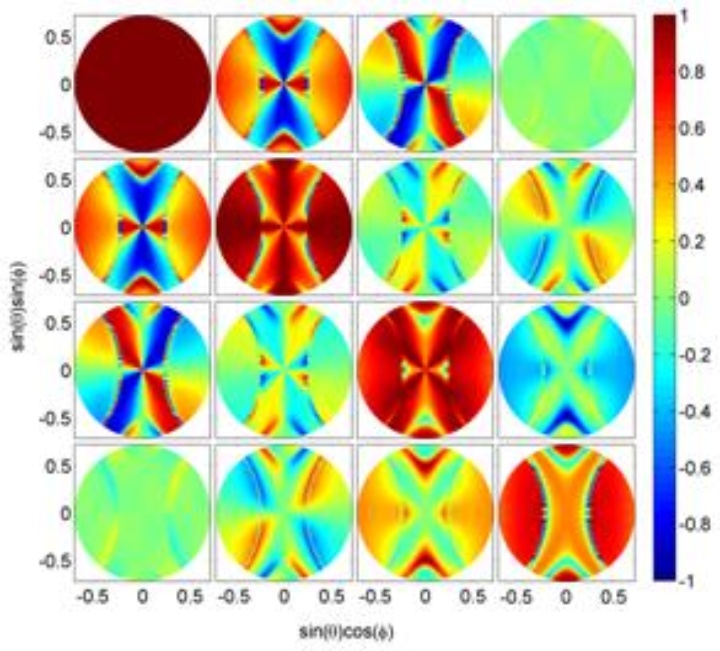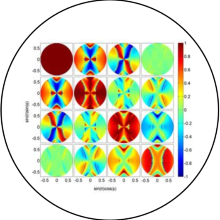Within a well-defined pass band, meander structures behave like almost ideal linear polarizers, can induce large phase retardation between s- and p-polarized light and show a high polarization conversion efficiency. In this respect, meander structures behave similar to plasmonic nanoslits at Fano resonance [1, 2] (Fig. 1) but over a wider frequency range and with a higher transmission. Due to these properties, meander structures can interact effectively with polarized light and can be used for different, non-imaging applications such as polarization scramblers [2, 3].


The proposed polarization scrambler consists of spatially distributed metallic meander structures with random angular orientations. We describe the polarization properties of meander structures or meander stacks with the Mueller matrix (Fig. 2a). The whole device has an optical response averaged over all pixel orientations within the incident beam diameter. Averaging over all azimuth angles leads to a more intuitive representation of the depolarization properties of the proposed polarization scrambler (Fig. 2b).
One can see that for small angles all off-diagonal Mueller matrix elements are zero whereas the diagonal elements are reduced to values below one. In this angle regime, the device represents a partial depolarizer. With our preliminary design, we achieve depolarization rates larger than 50% for arbitrarily polarized monochromatic and narrow-band light. Circularly polarized light could be depolarized by up to 95% at 600 THz. The presented polarization scrambler can be flexibly designed to work at any wavelength in the visible and infrared range with a bandwidth of up to 100 THz. The proposed device might prove advantageous for optical setups with monochromatic light sources and is desirable for space applications due to its low weight and large-scale manufacturability.
References
- M. Shcherbakov, M. Dobynde, T. Dolgova, D.-P. Tsai, and A. Fedyanin, "Full Poincaré sphere coverage with plasmonic nanoslit metamaterials at Fano resonance," Phys. Rev. B 82, 193402 (2010).
- P. Schau, L. Fu, K. Frenner, M. Schäferling, H. Schweizer, H. Giessen, L. M. Gaspar Venancio, and W. Osten, "Polarization scramblers with plasmonic meander-type metamaterials", Opt. Express 20, 22700 (2012).
- P. Schau, L. Fu, K. Frenner, H. Schweizer, M. Schaferling, T. Weiss, H. Giessen, L. M. Gaspar Venancio, S. Hannemann, and W. Osten, "Polarization scrambling with metallic meander structures for space applications," Proc. SPIE 8423, 842314, (2012).



